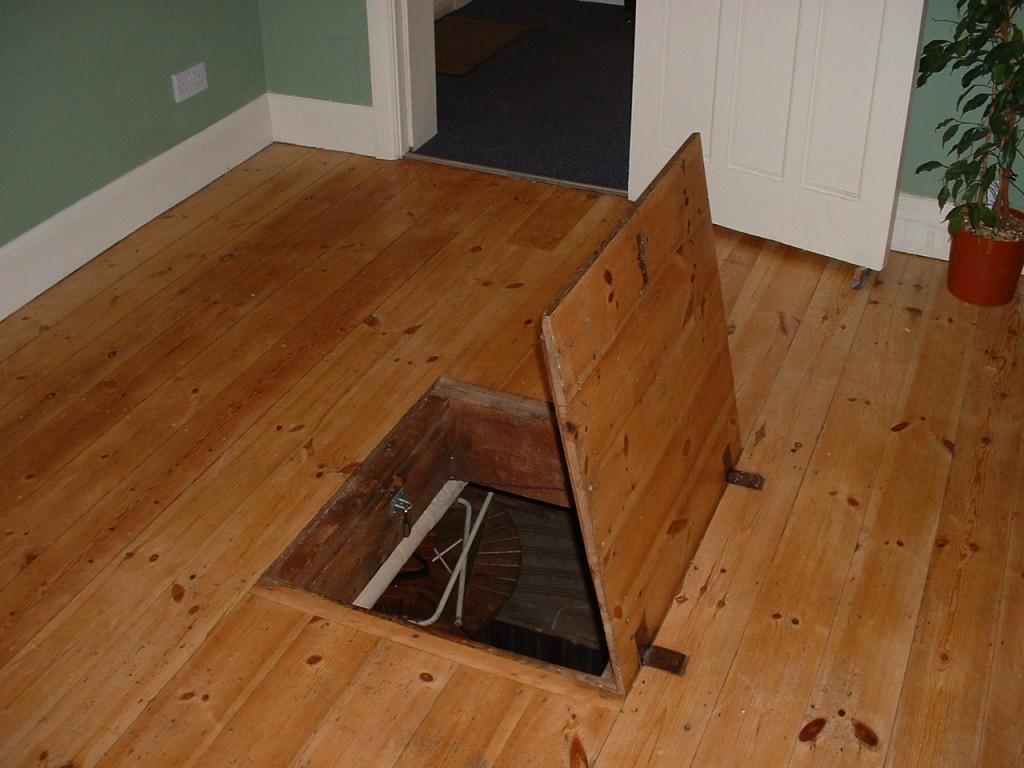Spider in the Attic

Police came to Peters’ house to find the doors and windows locked — and Peters bludgeoned to death. No one else was found in the house, yet there were no obvious ways for anyone to enter or exit. The mystery of the murder at the house on Moncrieff Place seemed unsolvable.
Matters became worse when Peters’ wife returned home, and was now living in the house with a housekeeper. The previously quiet house was now anything but: strange noises rang, day or night, seemingly indiscriminate toward the events of the day. Neighbors and passersby attested to seeing something in the house when the residents were not. This was sometimes written off as pranksters at play, but other times, as an apparation stalking the ground where a man was murdered. The housekeeper moved out quickly thereafter, believing that a ghost — be it Mr Peters’ or his assailant’s — haunted the Peters abode. Mrs. Peters soon followed, moving to the western part of the state to live with her son.
Undaunted, the police continued the investigation of the murder (if not the paranormal activity alleged) and made occassional trips to the house, now unoccupied. On one July evening in 1942, nine months after the murder, officers stationed across the house saw something — or someone — inside the house, peeking out behind a window. The officers went inside and heard a click — the opening of a lock, perhaps? — coming from the attic. One ran upstairs and saw them: legs. A man’s legs, trying to crawl into a small, cigar-box sized trap door, leading into a hidden closet the size of a small coffin. That man was Theodore Edward Coneys, a 59 year old homeless man who Mr. Peters had made the acquintance of thirty years earlier. And he wasn’t hiding in the closet. He was living there.
Upon capture, Coneys confessed to the details of his crime. He had come by the Peters’ house — unannounced and unexpected — in September of 1941, five weeks before Mr. Peters’ murder. His original intent was to ask for some money, but upon finding the home empty, decided to help himself to some food. He came across the trap door and, fearing that he would not survive another Colorado winter outdoors, turned the trap door closet into his makeshift home. And on October 17, Coneys decided to take something from Peters’ ice box — when Peters was still home. Peters attempted to subdue the younger Coneys but failed; Coneys, realizing that he was about to be evicted from his tiny home, instead murdered Peters.
Coneys’ pseudo-apartment featured an ironing board stuffed with magazines as a bed, and a single incandescant bulb. A police detective stated that “a man would have to be a spider” in order to survive in the tight spot Coneys called home. In light of this, local press nicknamed Coneys the “Denver Spider Man of Monncrieff Place.”
For his crime, Coneys was sentenced to life in prison.
Bonus fact: The first trap doors weren’t meant to hide people or, really, anything — they were meant for storage. They were designed to store milled grains. Windmills were used to grain wheat into flour, and a miller named George Green realized that it didn’t make a lot of sense to store the sacks of flour at the bottom of the mill — the top of the mill had a lot of unused space and, like home attics, could be used for storage. He developed a sack lift powered by the windmill, lifting the sacks into a storage container above. Keeping the sacks from falling back down required a unique solution, and that’s where the trap door comes from: when the sack passed through the ceiling door, the door snapped shut behind it, trapping the flour sack and preventing it from falling to the ground.
From the Archives: Murder, He Wrote: Another murder mystery.
Entirely unrelated product: A free Blu-Ray disc player when you purchase a Panasonic Plasma HDTV on Amazon.

Leave a comment